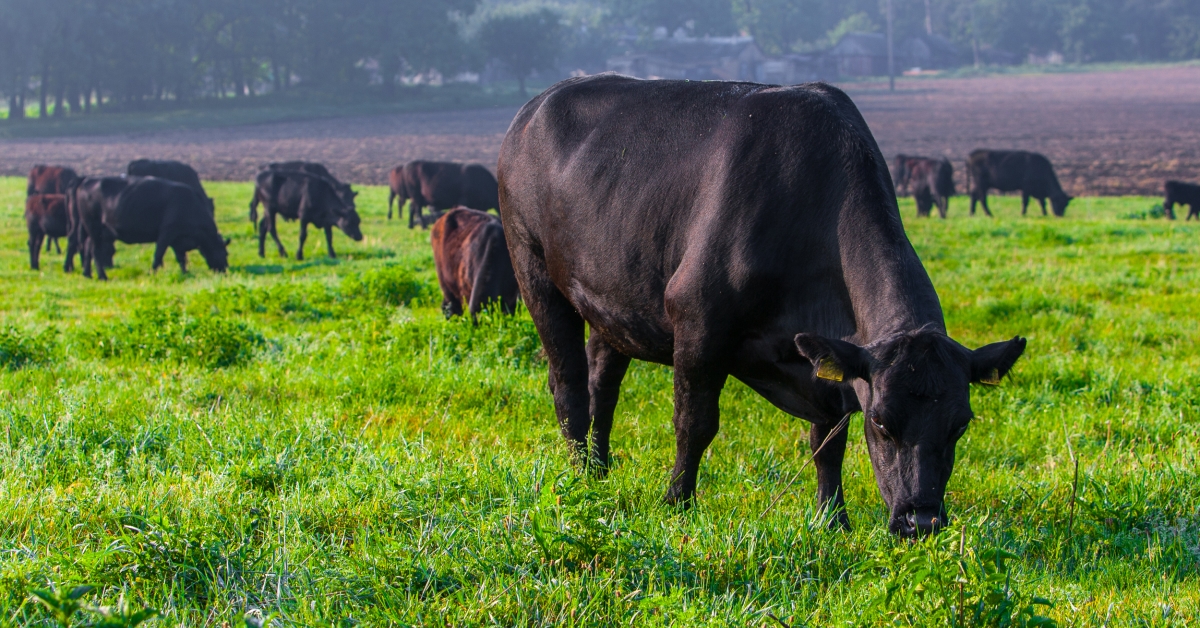Using Feed Additives with Grass Cattle

By Twig Marston, PhD, Hubbard Feeds. Reprinted with permission.
Cattle producers fight a long list of issues that rob them of profits. Many of these problems can be managed successfully by including additives in cow, calf and yearling diets as part of herd health and preventive health programs. Additives can be used to control, prevent and treat diseases; control or eliminate internal and external parasites; increase the nutritional value of feed; improve feed efficiency; and boost the rate of weight gain. Whether cattle are grazing native grass, tame grass pastures or crop residue fields, feed additives give producers the flexibility to better utilize the ranch’s resources and improve cattle performance.
For instance, one common disease that plagues cattle is coccidiosis. Several coccidiostats are available to combat this dreadful, profit-robbing disease, including popular ionophores such as monensin and lasalocid. Not all ionophores are cleared for feeding mature cows, but monensin can be fed to mature, reproducing beef cows for the prevention and control of coccidiosis as well as for improved feed efficiency. Replacement heifers and grass cattle can also be fed either monensin or lasalocid for increased rate of weight gain.
Other problems, such as anaplasmosis, fescue toxicosis, hoof integrity, scours and shipping fever, are often addressed with feed additives. In areas of the United States where anaplasmosis control is needed, chlortetracycline (CTC) can be added to the diet if a veterinary feed directive (VFD) is issued. FEB-200™, from Alltech, can be included in loose mineral and Crystalyx® products to combat the detrimental effects of endophyte-infected fescue pastures. Alltech’s Bio-Mos® 2 in the diet of a cow herd prior to and during the calving season can improve colostrum production, increase calf gut health, stimulate dry matter intake and minimize calf scours. Finally, while cattle grazing high-protein forages are susceptible to frothy bloat, the addition of Hubbard Feeds’ poloxalene solution, Bloat Guard, removes that risk.
Feed additives are also a powerful weapon against parasites. For instance, a strategic deworming program can strongly promote both cow and pasture performance. Especially today, with the spiraling cost of feed, deworming cattle in calves, yearlings and mature cows will pay for itself several times over. In terms of external parasites that lower profits, flies and ticks are an ongoing problem. Several compounds labeled for fly control can stop flies from developing past the larval stage. For the best results, these additives need to be included in cattle diets prior to the start of the fly’s breeding season. Producers who begin fly control early will greatly reduce the number of flies over the entire grazing season.
Timeliness is key to the successful use of feed additives. By including these solutions before the onset of the challenges they address, producers can greatly increase their effectiveness and significantly reduce subsequent treatment costs.
Including feed additives in cattle diets comes with added responsibilities. Some feed additives require a VFD, others may be regulated by a particular government agency, and still others are free from these constraints. It is imperative to follow the rules and regulations concerning feed additives so that they are used both safely and effectively.
Hubbard Feeds has a suite of nutritional technologies to fit any production’s needs, and your Hubbard Feeds dealer or representative will be glad to provide recommendations on topics such as the best feed delivery options for your operation. For example, in most cases, CTC must be hand-fed, which means the feed must be delivered daily, but Hubbard Feeds has a mineral supplement labeled for free-choice feeding.